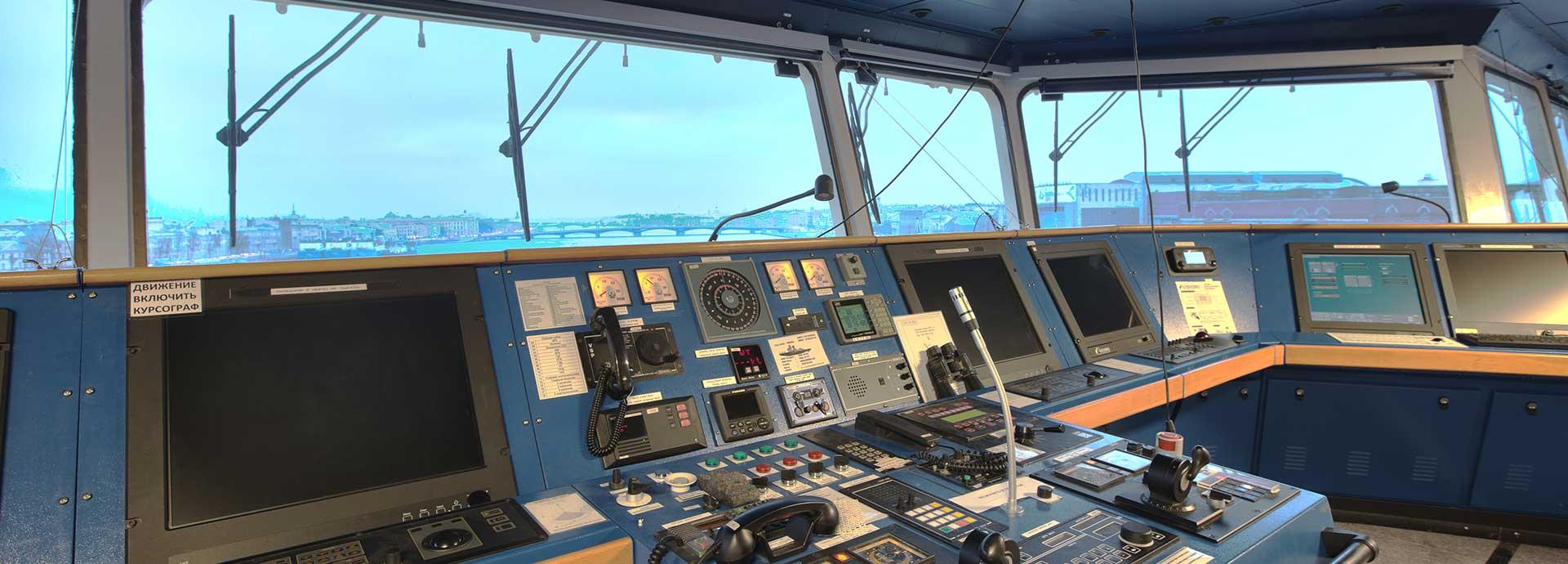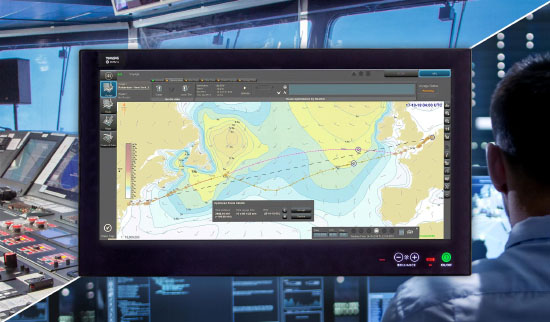

Wärtsilä helps ship owners and operators get more bang for their buck from onboard assets. Wondering how? By connecting a vessel’s Electronic Chart Display and Information System or ECDIS in short.
Here are the seven ways in which connecting the ECDIS can help ships become smarter and safer.
1. Improved uptime
The first thing that comes to mind when talking about a connected ECDIS is remote maintenance.
The use of advanced sensors and remote monitoring through a connected ECDIS helps identify issues/problems more precisely, leading to quicker recovery/rectification. It allows Wärtsilä to have a complete insight into the health of the navigation equipment and its working conditions and helps assess spare-part requirements, allowing for the right solution at the right time.
“Software-related questions impose the largest part of the requests we help our customers with, and they can be solved remotely along with getting the latest updates and patches without having to physically send an engineer. It helps save costs and is much quicker,” explains Christopher Schröder, Sales Director Northern Europe, Wärtsilä Voyage Solution.
A connected ECDIS improves uptime in 2 ways. One the one hand, it helps fix problems quicker and cheaper via remote service. On the other hand, the process driven design, enabled via connectivity helps reduce process-related questions, which are the primary
cause of most problems. Therefore, there is a reduction in problems and problems are solved faster.
2. More efficient voyage planning
Staying connected helps make voyage planning and preparation easier. Navigational data can be downloaded from the cloud automatically ensuring that the vessel has access to the latest digital, nautical and weather forecasting information.
Jason Banfield, Sales Manager, Wärtsilä Voyage Solution explains, “With a connected ECDIS we move away from the ‘tom-tom’ way of doing things and we move into a ‘Google maps’ way of navigating. That means routes are automatically planned based on navigational charts and data taking into account ship-specific global sailing patterns.”
With this, the time taken for voyage planning reduces considerably, from today’s four to five hours with ECDIS to about 30 minutes using the connected ECDIS – all with full control of the crew.
3. Cyber secure all the way
A digitally connected ECDIS also means more connections to the digital world, increasing the risk of cyberattacks.
“Unfortunately, today in most cases the means to get the information from its data source to the bridge is very insecure because of the human element working with emails and USB sticks” says Schröder.
Wärtsilä guards against this by augmenting the navigation system with sophisticated measures that include a security-compliant cloud platform, VPN, business and private network segmentation and data security validation.
Additionally, Wärtsilä has built up a virtual private network to ensure secure encrypted communication between the bridge and the data source, further removing any vulnerabilities it may have.
4. Always on, data collection
From bringing data from the shore to ship, to allowing data sharing from the ship to the shore. A connected ECDIS allows for data to always be available at any point of time enabling shipowners to analyse that data on demand. This includes real-time nautical data like position, heading, speed, weather and often RPM.
Whereas many systems are available today that record data and send it ashore, the difference lies in the integration with the ECDIS. With the data of the ECDIS, the data provided ashore is the most relevant information for vessels safety and performance. “Essentially this is hybrid data collection which includes high speed data through the connection of sensors to the ECDIS and manual information via the Smartlog app. Together this is a far more cost-effective, efficient and reliable way of getting data rather than having to retrofit the vessel with full auto logging systems. It also allows for advanced nautical analytics,” explains Banfield.
This can then be used for real-time vessel monitoring, post-voyage analytics and ease traditional daily reporting. The crew is also provided with a portable device which works as a redundant take me home solution in the event they are unable to access
the ECDIS.
5. Enabling advanced nautical analysis
With the ship’s data now available onshore, it increases the scope for advanced nautical analysis that helps improve a vessel’s performance and safety. Analysis of this data allows for the recording of nautical near misses, allowing for improved training of officers and crew. Past voyages can also be analysed, and information gathered to improve processes and operations.
Schröder explains, “You can see several aspects of a safe voyage: from how the crew prepared it to how they execute the voyage. Are they actually following their plans or are they deviating? An example is leaving the planned safe corridor while
underway. When a vessel stays out of the safety zone for a while you will get a notification. It allows to improve the navigational safety on the next voyage.”
6. Towards a smart marine ecosystem
A connected ECDIS allows for connecting vessels with ports and terminals thereby opening up the full potential for savings through just-in-time arrivals. Currently, Wärtsilä is using the open standard protocol defined by the EU funded Sea Traffic Management Project. All port-call information is fully integrated into the connected ECDIS.
Port operations constantly lead to changed plans. With a direct link to ports, vessels will be able to receive information on a delayed requested time of arrival (RTA) directly in the ECDIS. This allows to adjust the voyage and the vessel can reduce speed – saving fuel and emissions.
7. Better fleet performance management
A connected ECDIS enables better fleet performance and voyage planning via better speed management, route optimisation and can also be effective in just-in-time port arrivals. Its ability to collect and share data on a real time basis helps generate real-time feedback which directly improves performance.
Fleet performance management is usually measured in fuel savings. Hybrid data from Wartsila’s connected ECDIS and smart algorithms generated by its Eniram system help build a vessel’s proven virtual fuel flow model and a speed fuel profile. This allows ship owners to plan voyages and know their vessels more accurately and can help them save 5-10% in fuel expenses annually.
“We are building a virtual model of your ship and this virtual model allows us to look into not just past performances but also to simulate future voyages. And when you simulate voyages, you can much better describe your vessel's performance to your customers as well as you can offer your vessel potentially at a much more competitive rate,” elaborates Schröder.
Needless to say, this enables shipowners and operators to optimise their performance of their fleets, resulting in greater degrees of efficiency and profitability.
Did you like this? Subscribe to Insights updates!
Once every six weeks, you will get the top picks – the latest and the greatest pieces – from this Insights channel by email.

